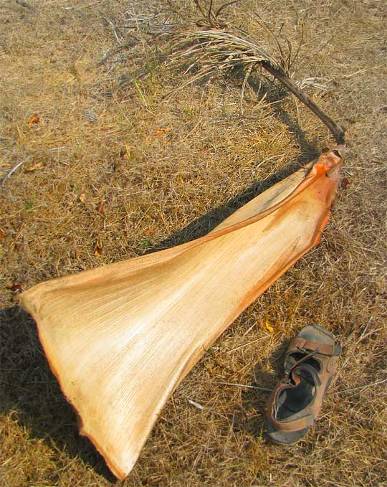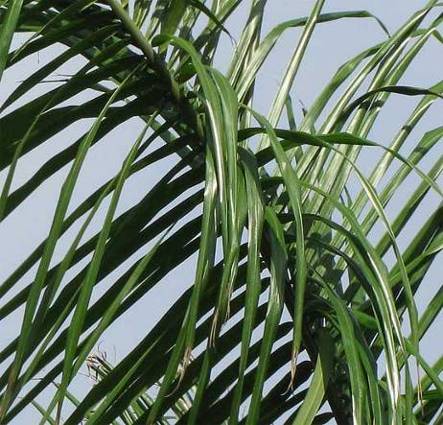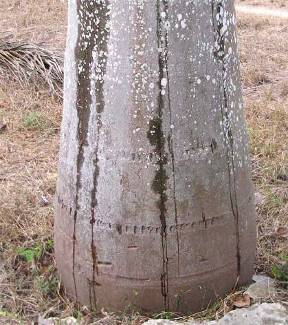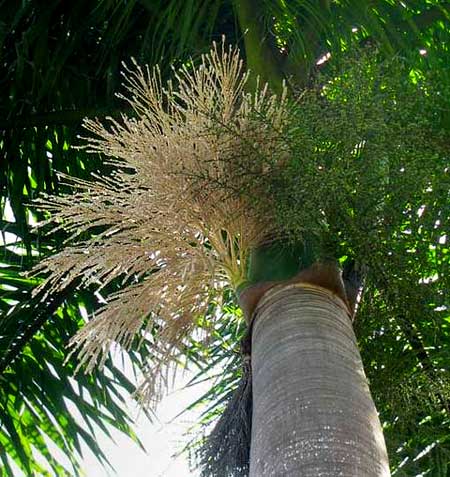

Back during the heyday of henequen production when Mérida boasted of being home to more millionaires per capita than any other city on Earth, entry roads to the most prosperous plantation mansions often were framed with tall, stately Royal Palms, Roystonea regia, such as those at the right.
Something special that helps distinguish Royal Palms from other palm species is their prominent, green "crownshaft" -- that smooth, green area between the gray trunk and the tuft of shaggy fronds. Crownshafts are formed by the leaves' very broad, overlapping petiole-bases, a petiole being a leaf's stem.
Here's something all property owners with lots of Royal Palms on their grounds know: The bottom leaves or fronds of Royal Palms always are drying up and falling off as new, larger fronds emerge above them. What's shown below is very typically found beneath Royal Palms.

Old fronds fall mainly during the dry season. Ridding itself of older, less efficiently photosynthesizing leaves is a water-saving adaptation. Another adaptation is shown below.

 The Royal Palm fronds' closely spaced leaflets arise from the midrib at various angles. That's very different from most other feathery-leafed palms whose pinnae are like flat feathers. Why would such a dignified palm permit itself such disorderly appearing fronds? The answer became clear one morning as I breakfasted beneath a Royal Palm.
The Royal Palm fronds' closely spaced leaflets arise from the midrib at various angles. That's very different from most other feathery-leafed palms whose pinnae are like flat feathers. Why would such a dignified palm permit itself such disorderly appearing fronds? The answer became clear one morning as I breakfasted beneath a Royal Palm.
All during the meal cool water droplets showered onto my bare back from the palm's shaggy leaves. Also, little streamlets of water drained down the palm's trunk, as shown at the right.
The palm's many leaflets thrusting ever-which-way into the morning's moisture-saturated air were wicking moisture from the air, gathering it and dropping it onto its own roots, and letting it run down its smooth, absorbent-looking trunk!
Royal Palms also produce enormous flower clusters, which sometimes buzz very loudly with bees and other pollinators, as shown at the left.

Sexually, Royal Palms are "monoecious," which means that each tree bears separate male and female flowers. In the picture, the dark green flower cluster on the right bears hundreds of developing fruits, which when mature will be only about half an inch wide (1.3 cm); the white cluster at the left bears thousands of male flowers that when spent will flurry to the ground like a gentle snow. Sometimes the ground becomes white with discarded male flowers.
Royal Palms are native to southern Florida, southeastern Mexico, including the Yucatan, as well as Cuba, the Bahamas and the Cayman Islands. Earlier the Florida populations were regarded as a different species, but genetic studies show that they are not distinct enough to be regarded as a separate species.